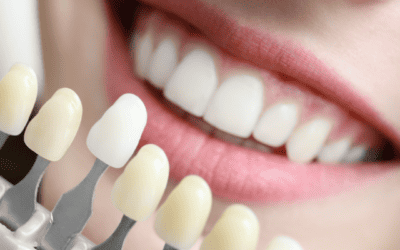 For many of us, going to the dentist is not our favourite way to spend our time yet we know we have to go.
For many of us, going to the dentist is not our favourite way to spend our time yet we know we have to go.
We know it’s part of our overall health care, and we grin and bear it (pun intended) as we know it’s good for us. For some people the thought of a dental procedure may bring them out in a cold sweat. For others, the very thought of setting foot inside a dentist’s rooms is just too terrifying.
In fact, according to the Australian Dental Association, 50% of Australians avoid going to the dentist and one of the reasons is fear. For those with severe dental anxiety, avoiding dental care can lead to further dental problems, and unfortunately, dental phobics can end up needing more dental treatment due to years of putting it off. However, there are things to help, such as dental sedation.
One of our owners and dentists here Dentistry on George, Dr Kathryn Al-Dhafeeri, has spent her career working with anxious and phobic patients. While working in the UK, Dr Kathryn was able to provide conscious sedation to her patients, which helped reduce her patient’s anxiety and helped them forget unpleasant dental procedures. In February 2023 Dr Kathryn started her Graduate Diploma in Conscious Sedation and Pain Control at the University of Sydney. Once qualified and endorsed, she will be able to provide conscious sedation for our patients here at Dentistry on George. However, when excitedly telling her patients and non-dental friends about this course she is frequently asked “what is sedation?” and “why would someone want that for dental treatment?”. This blog is going to address both those questions and give you some insights into these new treatment options that we are bringing to Dentistry on George.
What Is Dental Sedation?
According to the Australian and New Zealand College of Anaesthetists, sedation can be classified into mild, moderate or deep. All types of sedation are drug-induced states where a person’s level of consciousness is altered. Sedation is on a continuum, from being fully conscious, to being fully unconscious (general anaesthetic).

You’ll be relieved to know that deep sedation and general anaesthetics are something we will leave to the anaesthetists in hospital! Mild sedation using nitrous oxide is something that we have recently brought to Dentistry on George. However, for moderate sedation (conscious sedation), the sedationist needs to be qualified and endorsed yearly with AHPRA to provide this service. This is what Dr Kathryn is working towards.
Mild Sedation
Mild sedation involves the administration of drugs to reduce a patient’s anxiety about dental treatment (anxiolysis). The patient is still awake and conscious and will respond to instructions from the dentist. An example of mild sedation is the administration of nitrous oxide.
Nitrous oxide is a gas which is inhaled by the patient (inhalation sedation) and you might have sometimes heard this being referred to as ‘happy gas’.

The great thing about inhalation sedation is that the gas is breathed in for either the duration of the dental treatment, or just for certain parts of the procedure that the patient may be anxious about, for example, the local anaesthetic numbing. Once the gas is turned off, people return to normal pretty quickly.
Everyone responds to sedation differently. Some of the feelings people may have when having inhalation sedation with nitrous oxide are:
- A feeling of warmth
- Feeling like all your muscles are relaxing
- A feeling of sinking into the chair (feeling heavy)
- A feeling of floating off the chair (feeling light)
- Hands and/or feet may feel tingly
Who is suitable for inhalation sedation?
All patients will undergo a sedation assessment prior to any recommendations.
The dentist will take into account your medical and medication history, as well as your level of dental anxiety.
Inhalation sedation is great for those who need a little help to relax at the dentist, who have a pronounced gag reflex, or who are just mildly apprehensive about a certain procedure, or part of procedure. It will not stop patients from remembering the procedure and they will be conscious throughout.
As the nitrous oxide gas is inhaled through the nose, those who cannot breathe through their nose are not suitable for this treatment. If you want to find out more about inhalation sedation, please contact our friendly team and ask for our e-booklet on this service.
Moderate Sedation
Moderate sedation involves the administration of drugs to reduce the patient’s level of consciousness. The patient is still awake and is still able to respond to instructions from the dentist and sedationist. Quite often the patient does not remember the procedure, and sometimes patients may think they have been asleep. However, during conscious sedation, the patient will never lose consciousness.
As moderate sedation involves the administration of sedative drugs, a thorough assessment must be carried out. The dentist will take into account your medical and medication history as well as your levels of dental anxiety.
Conscious sedation allows dental treatment to be carried out for those who are either very anxious about a procedure, or those who do not want to remember an unpleasant procedure.
However, you will be awake throughout and depending on the levels of dental anxiety and the type and length of procedure, a general anaesthetic in hospital may be more suitable for those with severe anxiety or more complex medical histories.

What if I’m anxious, but I don’t want sedation?
For some people who are anxious about the dentist, they are also anxious about the thought of sedation. We have other techniques available to help relax and distract you without the need to sedate you:
- Great local anaesthetic techniques – both Dr Kathryn and Dr Mishari have worked over the years to improve their local anaesthetic techniques to make it as comfortable as possible. We have the ‘Dentapen’ which is a digital delivery device for anaesthetics and some effective topical anaesthetic gels.
- Essential oils – we have relaxing lavender, citrus or lemongrass. Great for masking those clinical dental smells.
- Noise cancelling headphones – put on your favourite podcast or playlist to block out those dental noises and help distract from the treatment going on.
- Slow and steady – at Dentistry on George, you’re always in control. We always give you signals so you can let us know that you need a break. We talk through all the dental options available to you and help you make an informed decision about your treatment.
- Relaxing environment and friendly team – we put a lot of effort into designing our practice so that it doesn’t feel like a dental practice. Our patients love our warm and inviting waiting area and our lovely staff are there to help put your mind at ease, every step of the way.
How can we help you?
Contact us to find out more about dental sedation, or to request a copy of our inhalation sedation e-booklet.




